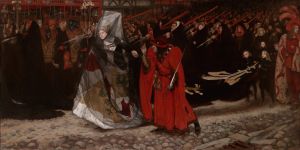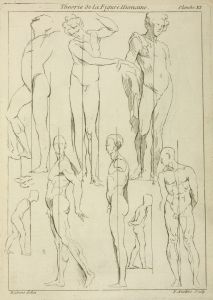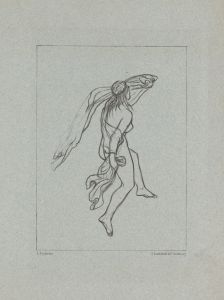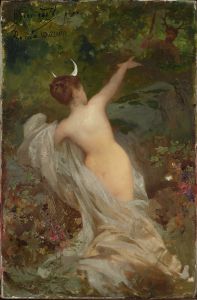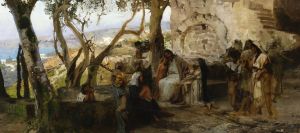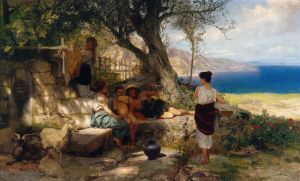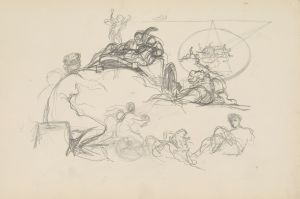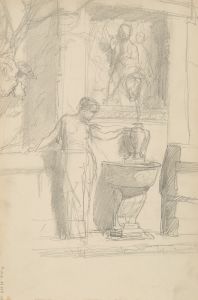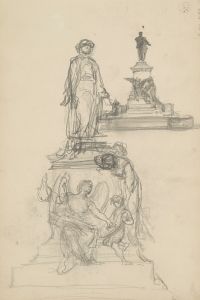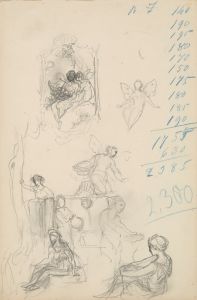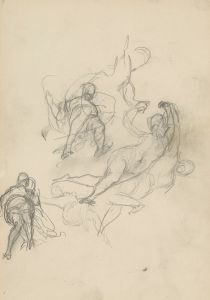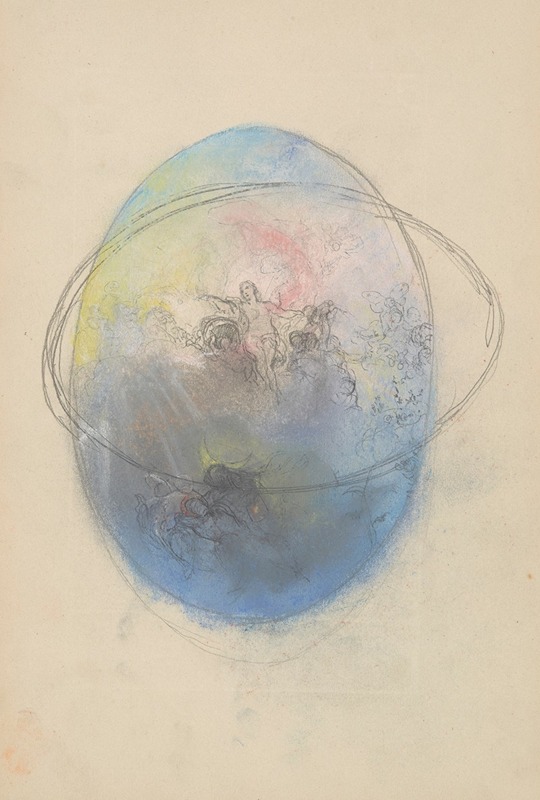
projekt plafonu ‘Jutrzenka’ do pałacu J. Neczajewa-Malcewa w Petersburgu
A hand-painted replica of Henryk Siemiradzki’s masterpiece projekt plafonu ‘Jutrzenka’ do pałacu J. Neczajewa-Malcewa w Petersburgu, meticulously crafted by professional artists to capture the true essence of the original. Each piece is created with museum-quality canvas and rare mineral pigments, carefully painted by experienced artists with delicate brushstrokes and rich, layered colors to perfectly recreate the texture of the original artwork. Unlike machine-printed reproductions, this hand-painted version brings the painting to life, infused with the artist’s emotions and skill in every stroke. Whether for personal collection or home decoration, it instantly elevates the artistic atmosphere of any space.
Henryk Siemiradzki, a renowned Polish painter of the 19th century, is celebrated for his contributions to the academic art movement, particularly for his large-scale historical and mythological scenes. One of his notable works is the ceiling project titled "Jutrzenka" (translated as "Aurora" or "Dawn") for the palace of J. Nechayev-Maltsov in Saint Petersburg, Russia. This project exemplifies Siemiradzki's mastery in creating grand, decorative compositions that were highly sought after during his time.
The palace of J. Nechayev-Maltsov, a significant architectural and cultural landmark in Saint Petersburg, was owned by the wealthy Russian industrialist and patron of the arts, Ivan Nechayev-Maltsov. The palace itself was a hub for artistic and cultural gatherings, reflecting the opulence and artistic tastes of the Russian elite during the late 19th century. Siemiradzki's involvement in the decoration of this palace underscores his prominence and the high regard in which he was held by patrons of the arts.
"Jutrzenka" was designed as a plafond, or ceiling painting, a format that allowed Siemiradzki to explore themes of light, myth, and beauty on a grand scale. The subject of the painting, Aurora, is a figure from Roman mythology, representing the dawn. This theme was particularly fitting for a ceiling piece, as it symbolically and visually opened up the space, inviting viewers to gaze upwards into a scene of mythological splendor.
Siemiradzki's work is characterized by its meticulous attention to detail, vibrant color palette, and the harmonious composition of figures and landscapes. In "Jutrzenka," these elements would have been employed to create a dynamic and uplifting scene, capturing the essence of dawn as a time of renewal and hope. The use of light and shadow in the painting would have been particularly important, as it would need to interact with the natural and artificial lighting of the palace interior to achieve its full effect.
The creation of such a work required not only artistic skill but also an understanding of architectural space and the ability to collaborate with architects and other artists involved in the decoration of the palace. Siemiradzki's ability to integrate his work into the broader decorative scheme of the palace would have been essential to the success of the project.
While specific details about the current state or location of "Jutrzenka" are not widely documented, Siemiradzki's contribution to the Nechayev-Maltsov palace remains a testament to his skill and the cultural exchanges between Poland and Russia during this period. His work continues to be studied and admired for its technical excellence and its embodiment of the ideals of academic art.
Overall, Henryk Siemiradzki's "Jutrzenka" for the Nechayev-Maltsov palace is a significant example of 19th-century European art, reflecting the cultural and artistic values of its time and the enduring appeal of mythological themes in art.





